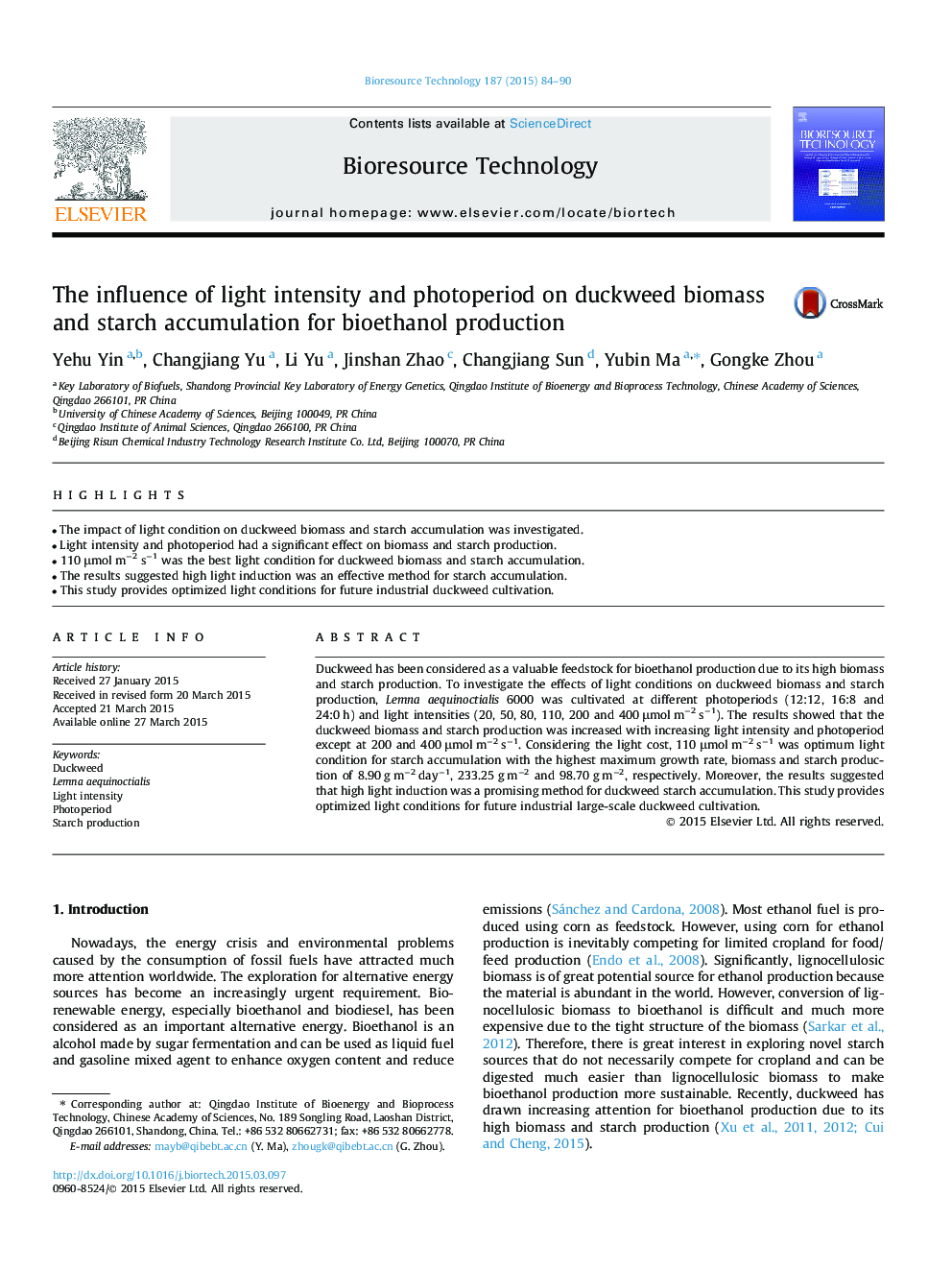| Article ID | Journal | Published Year | Pages | File Type |
|---|---|---|---|---|
| 7074926 | Bioresource Technology | 2015 | 7 Pages |
Abstract
Duckweed has been considered as a valuable feedstock for bioethanol production due to its high biomass and starch production. To investigate the effects of light conditions on duckweed biomass and starch production, Lemna aequinoctialis 6000 was cultivated at different photoperiods (12:12, 16:8 and 24:0 h) and light intensities (20, 50, 80, 110, 200 and 400 μmol mâ2 sâ1). The results showed that the duckweed biomass and starch production was increased with increasing light intensity and photoperiod except at 200 and 400 μmol mâ2 sâ1. Considering the light cost, 110 μmol mâ2 sâ1 was optimum light condition for starch accumulation with the highest maximum growth rate, biomass and starch production of 8.90 g mâ2 dayâ1, 233.25 g mâ2 and 98.70 g mâ2, respectively. Moreover, the results suggested that high light induction was a promising method for duckweed starch accumulation. This study provides optimized light conditions for future industrial large-scale duckweed cultivation.
Related Topics
Physical Sciences and Engineering
Chemical Engineering
Process Chemistry and Technology
Authors
Yehu Yin, Changjiang Yu, Li Yu, Jinshan Zhao, Changjiang Sun, Yubin Ma, Gongke Zhou,
